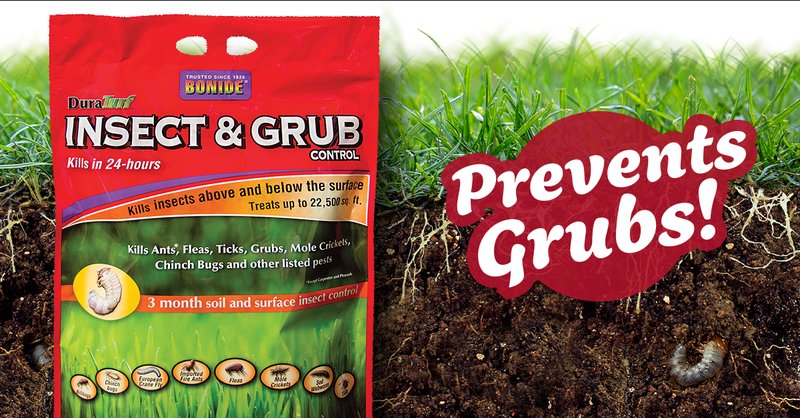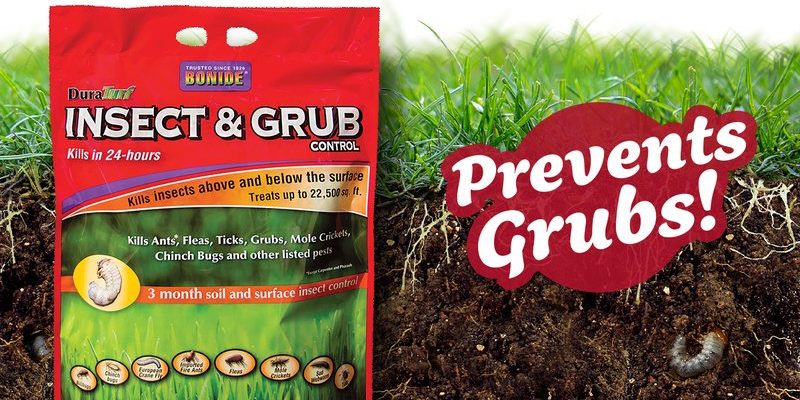
You might be wondering, “What exactly are grub worms?” They’re the larvae of beetles and can do quite a number on your lawn by munching on roots and soil. It’s like inviting a group of uninvited guests to your garden party — they just won’t leave. Lawn aeration helps create an environment that discourages these pests and encourages healthier grass. So, grabbing a manual or powered aerator can be a game-changer for both your lawn and your peace of mind.
Understanding Grub Worms
Grub worms are often the unseen culprits of lawn damage. They start as small eggs laid by adult beetles, and when they hatch, they burrow into the soil, feeding on grass roots. This damage can lead to brown patches and even dead areas in your lawn, which is never a good look for your outdoor space.
But why should you care? Well, a healthy lawn is not just about aesthetics. It plays a vital role in supporting local ecosystems, controlling erosion, and even regulating temperature. So, tackling grub worms isn’t just about keeping your grass green; it’s about maintaining the overall health of your yard.
Understanding their life cycle is key. Grub worms typically appear in late summer or early fall, laying the groundwork for their munching spree the next spring. By aerating your lawn before this peak season, you can disrupt their habitat and make it less inviting for these pests.
The Basics of Lawn Aeration
So, what exactly is lawn aeration? It’s the process of perforating the soil with holes to allow air, water, and nutrients to penetrate down to the roots. Imagine how hard it can be for a struggling plant to get what it needs if the soil is packed tight — it’s like trying to breathe through a straw!
There are two main types of lawn aeration: core aeration and spike aeration. In core aeration, a machine removes small plugs of soil from your lawn, creating holes that are about 2-4 inches apart. This method is generally more effective because it addresses compaction directly. Spike aeration simply pokes holes into the soil, but it doesn’t remove any plugs.
If you’re serious about keeping your lawn healthy and preventing grub worms, core aeration is the way to go. Just think of it as giving your lawn a refreshing makeover — with a focus on health!
When is the Best Time to Aerate?
Timing is crucial when it comes to lawn aeration. You wouldn’t plant seeds in freezing soil, right? Similarly, aeration should be done during the growing season for your grass type. For most cool-season grasses, early spring and fall are ideal. Warm-season grasses thrive with aeration in late spring through early summer.
Aerating during these optimal times encourages new growth and boosts the lawn’s resilience against pests like grub worms. It’s like giving your lawn a launching pad when it’s ready to take off! Just be sure that your lawn is moist when you aerate, as dry soil can make the process more difficult.
If you’re unsure about when to aerate, consulting a local lawn care expert can help. They’ll know the best timing for your specific climate and grass type, ensuring your lawn gets the most benefit.
How Lawn Aeration Helps Prevent Grub Worm Infestations
You might be curious about how exactly aeration helps ward off grub worms. When you aerate your lawn, you’re doing a few key things:
– Reducing Compaction: Compacted soil is the perfect environment for grub worms. By aerating, you break up the compacted soil, making it harder for these pests to thrive.
– Improving Drainage: Good drainage is vital. Aeration helps water flow more freely to the roots, which strengthens your grass and makes it less susceptible to pests. A strong lawn can naturally resist infestations better than a weak one.
– Boosting Soil Health: Aeration allows microbial life in the soil to thrive, which can naturally combat pests. Healthy soil means healthier grass, which ultimately leads to fewer grub worms in your yard.
So, you see, lawn aeration isn’t just about making your yard look good; it’s like putting on armor against pesky invaders!
How to Aerate Your Lawn
Ready to aerate your lawn? Here’s a simple step-by-step guide to get you started:
1. Choose the Right Tool: You can rent a core aerator from a local garden center or even purchase a manual one if your lawn isn’t too large.
2. Mow Your Lawn: Start by mowing your grass to a shorter height — around 2 inches is perfect. This helps the aerator do its job effectively.
3. Water the Lawn: Water your lawn a day or two before aerating. This will soften the soil, making it easier for the aerator to penetrate.
4. Aerate the Lawn: Follow the instructions for your aerator. For core aerators, overlap your passes slightly for even coverage.
5. Leave the Plugs: After aerating, leave the soil plugs on the lawn. They’ll decompose and add nutrients back into the soil.
6. Seed and Fertilize (Optional): If desired, you can seed your lawn and apply fertilizer after aerating to maximize the benefits.
It’s a straightforward process, and once you get the hang of it, it becomes a part of your lawn care routine.
Additional Lawn Care Tips to Keep Grubs Away
While lawn aeration is a powerful tool against grub worms, it’s not the only strategy in your toolkit. Here are some additional tips to keep those critters at bay:
– Keep Your Lawn Healthy: Regular watering and mowing play a huge role. A healthy lawn can better withstand pest infestations.
– Monitor and Manage Thatch: Thatch, a layer of dead grass and organic material, can provide a cozy home for grubs. Regular raking and aerating can help manage thatch levels.
– Use Beneficial Nematodes: If you’re dealing with an infestation, consider introducing beneficial nematodes to your soil. They’re natural predators of grub worms and can help reduce their population.
– Practice Crop Rotation: If you have a vegetable garden, rotating your crops can help disrupt the lifecycle of pests like grubs.
Taking these additional steps alongside aeration creates a comprehensive defense against grub worms, making your lawn a healthier and more resilient space.
Preventing grub worm infestations might seem like a daunting task, but it doesn’t have to be. With lawn aeration, you’re not just improving the health of your grass; you’re also creating an inhospitable environment for those pesky invaders. Remember, a strong lawn is your best defense.
So, grab that aerator, roll up your sleeves, and give your lawn the care it deserves. In the end, a healthy, vibrant lawn not only looks good but also contributes to a thriving ecosystem right in your backyard. Here’s to a grub-free lawn and all the lush greenery that comes with it!

